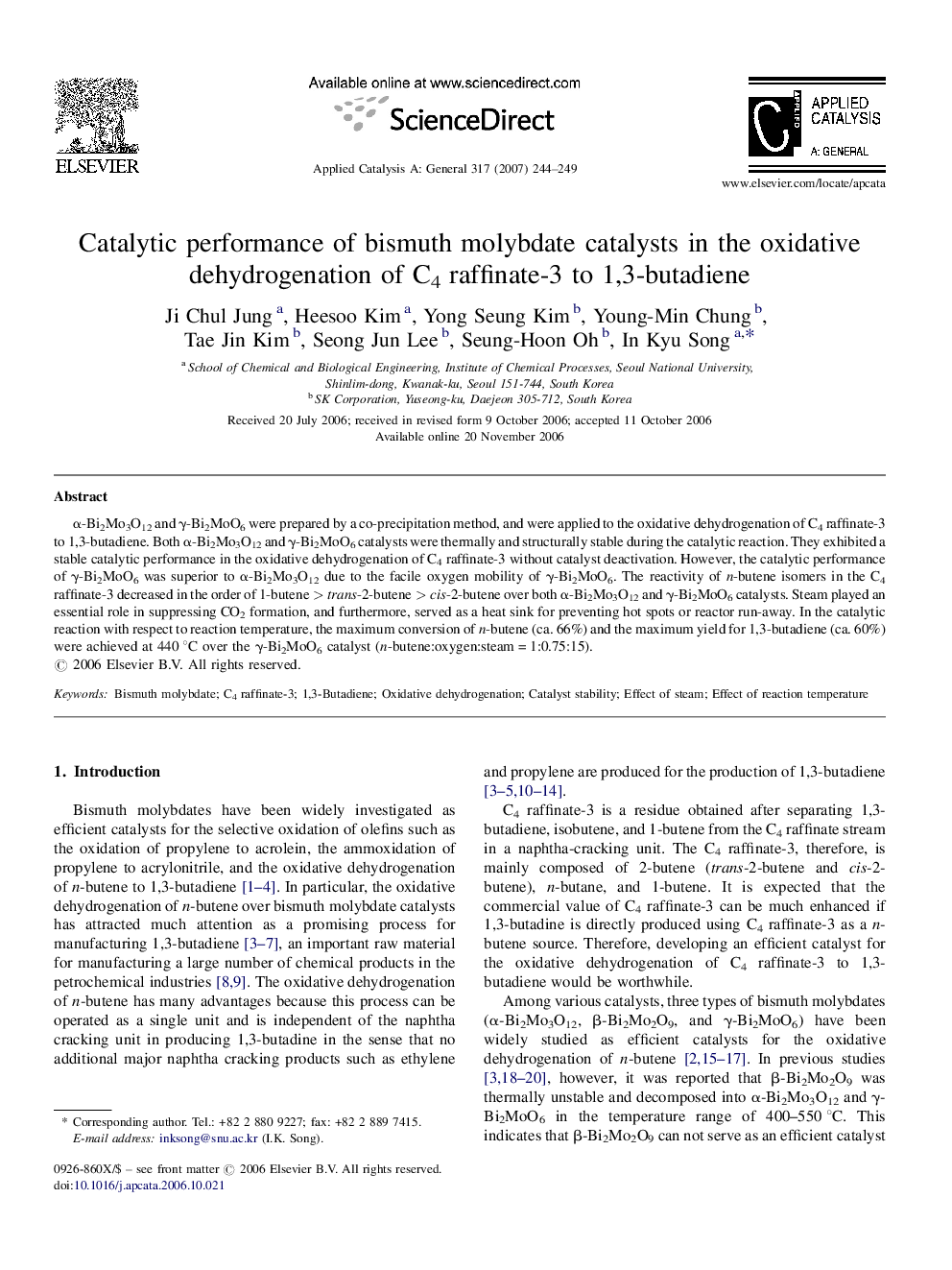| Article ID | Journal | Published Year | Pages | File Type |
|---|---|---|---|---|
| 44129 | Applied Catalysis A: General | 2007 | 6 Pages |
α-Bi2Mo3O12 and γ-Bi2MoO6 were prepared by a co-precipitation method, and were applied to the oxidative dehydrogenation of C4 raffinate-3 to 1,3-butadiene. Both α-Bi2Mo3O12 and γ-Bi2MoO6 catalysts were thermally and structurally stable during the catalytic reaction. They exhibited a stable catalytic performance in the oxidative dehydrogenation of C4 raffinate-3 without catalyst deactivation. However, the catalytic performance of γ-Bi2MoO6 was superior to α-Bi2Mo3O12 due to the facile oxygen mobility of γ-Bi2MoO6. The reactivity of n-butene isomers in the C4 raffinate-3 decreased in the order of 1-butene > trans-2-butene > cis-2-butene over both α-Bi2Mo3O12 and γ-Bi2MoO6 catalysts. Steam played an essential role in suppressing CO2 formation, and furthermore, served as a heat sink for preventing hot spots or reactor run-away. In the catalytic reaction with respect to reaction temperature, the maximum conversion of n-butene (ca. 66%) and the maximum yield for 1,3-butadiene (ca. 60%) were achieved at 440 °C over the γ-Bi2MoO6 catalyst (n-butene:oxygen:steam = 1:0.75:15).
Graphical abstractIn the oxidative dehydrogenation of C4 raffinate-3 to 1,3-butadiene, the maximum yield for 1,3-butadiene (ca. 60%) was achieved at 440 °C over γ-Bi2MoO6 catalyst (n-butene:oxygen:steam = 1:0.75:15). Figure optionsDownload full-size imageDownload as PowerPoint slide
